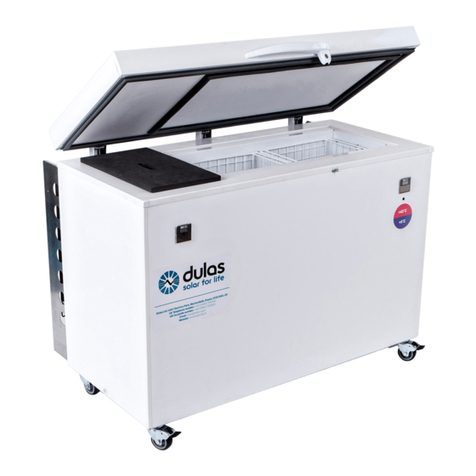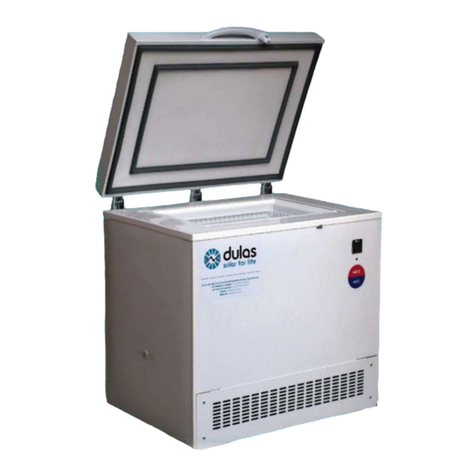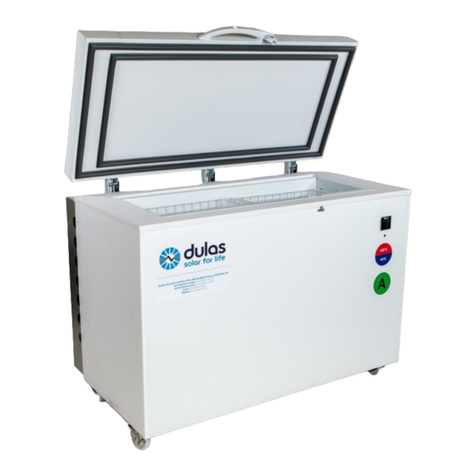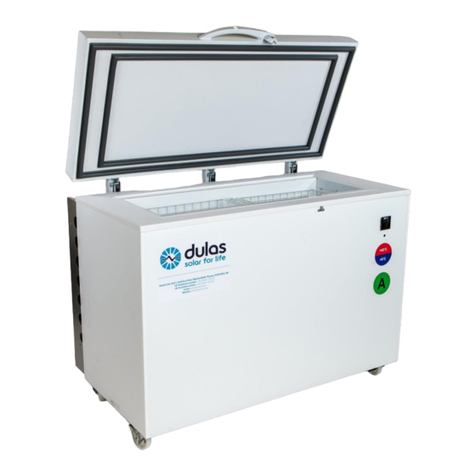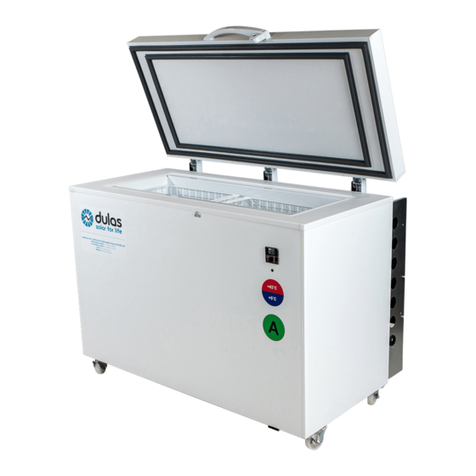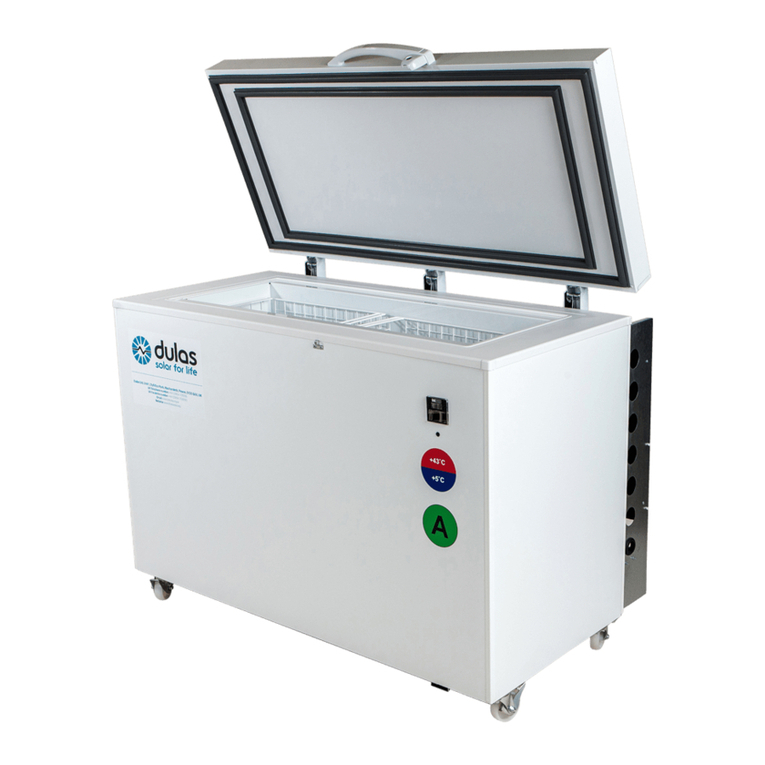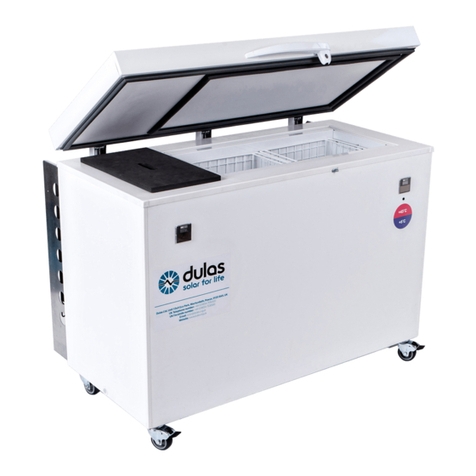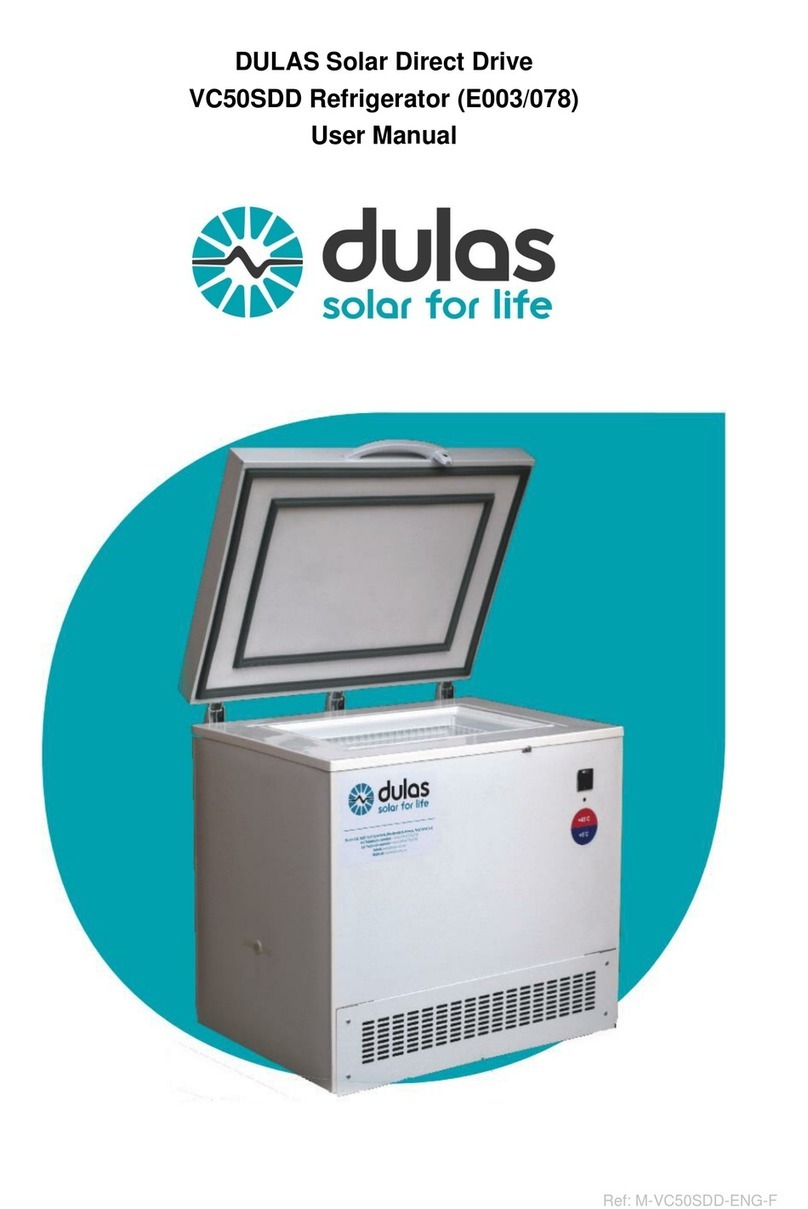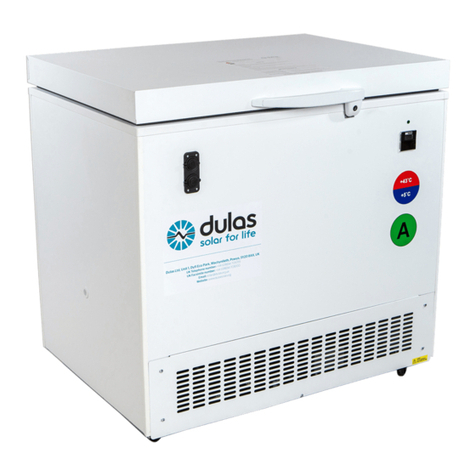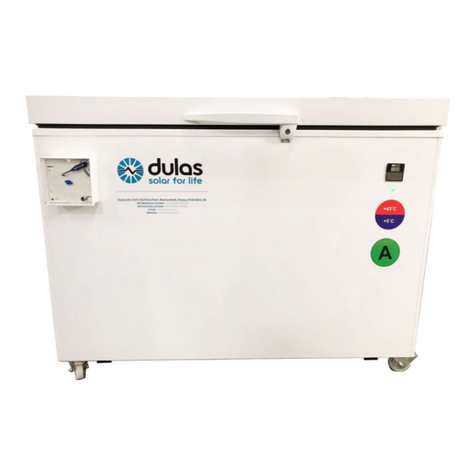3.
Your Dulas Solar Direct Drive Refrigerator
Congratulations on choosing the Dulas VC60SDD vaccine refrigerator and water pack freezer.
With over 30 years of engineering experience in the production of solar powered vaccine
refrigerators, Dulas is considered one of the market leaders in this field.
The VC60SDD is Dulas’ latest innovation in solar refrigeration. Using our new solar direct drive
technology we have replaced the traditional battery energy store with a ground breaking phase
change solution. With this new technology we can offer the same renowned Dulas quality and
reliability that have always kept your vaccines safe, but in a simpler and more efficient package.
How does solar direct drive work?
When the sun shines the solar panels generate electricity which directly drives the refrigerators
compressor, cooling down the refrigerator and its contents. As a result the compressor only
operates during the day. To maintain the temperature at night or when the sun is not shining the
refrigerator has a phase change lining. This interior lining holds the exact temperatures required
for safe vaccine storage and acts as a “cold store”, storing energy that keeps the temperatures
stable all day and night.
In order to store sufficient energy to keep vaccines safe for prolonged periods without any
sunshine, the refrigerator must be allowed time to charge its cold store. Under normal
sunlight conditions (8 hours/day of solar irradiance >200W/m²) the refrigerator will take
approximately 7 days to fully charge the cold store and be ready for vaccine storage.
In the VC60SDD the freezer compartment is secondary to the vaccine compartment. It has its own
separate refrigeration circuit and we prioritise the operation of the vaccine compartment. The
freezer only runs when there is enough solar energy to power first the fridge compressor and then
the freezer. This means that in periods of very low sunshine you may not be able to freeze water
packs.
Recommended solar array
The VC60SDD has been designed to meet the World Health Organisations Performance, Quality
& Safety (PQS) standards. The refrigerator has been independently tested to the PQS standard
WHO/PQS/E03/RF05 and is a Hot zone rated appliance with an ambient operating temperature
range of between +5C and +43C. For use in such Hot Zone environments it should be powered by
a minimum 600W solar array with a Voc not exceeding 45Vdc.
